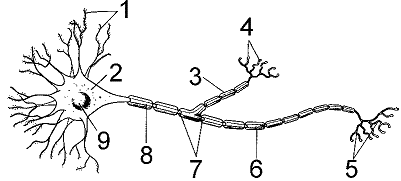Which of these summarizes the overall reactions of cellular respiration?
A. C6H12O6 + 6 O2 6 CO2 + 6 H2O +
energy
B. 6 CO2 + 6 H2O + energy C6H12O6 + 6
O2
C. C6H12O6 + 6 O2 + energy 6 CO2 + 12
H2O
D. 6 CO2 + 6 O2 C6H12O6 + 6 H2O
E. H2O 2 H+ + 1/2 O2 + 2e-
A
You might also like to view...
The genetic code includes
A) 3 start codons and 1 stop codon. B) 2 start codons and 2 stop codons. C) 1 start codon and 3 stop codons. D) 0 start codons and 4 stop codons.
He function of the structure labeled 6 in Figure 41-1 is:
 T
T
a. insulation.
b. neurotransmitter release.
c. binding neurotransmitters.
d. conduction of an electrical signal.
e. acting as a ligand-gated channel.
If changes occur in the genetic diversity of a species and they are not the result of natural selection, which of the following could have occurred?
A. This could be a case of genetic drift. B. The population may be extremely small. C. Random events may have eliminated certain genes from the population. D. All of the answers are correct.
What best describes whether a virus is likely to infect a particular cell?
A. Viruses only attack epithelial cells, such as the cells lining the lungs. B. Viruses infect the first cells they encounter. C. The initial choice is random but once a cell type is chosen it becomes the preferred host. D. A virus will only infect host cells with the correct surface receptors. E. If a host cell is weakened, viruses are likely to infect it.